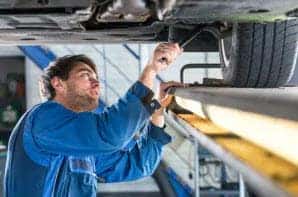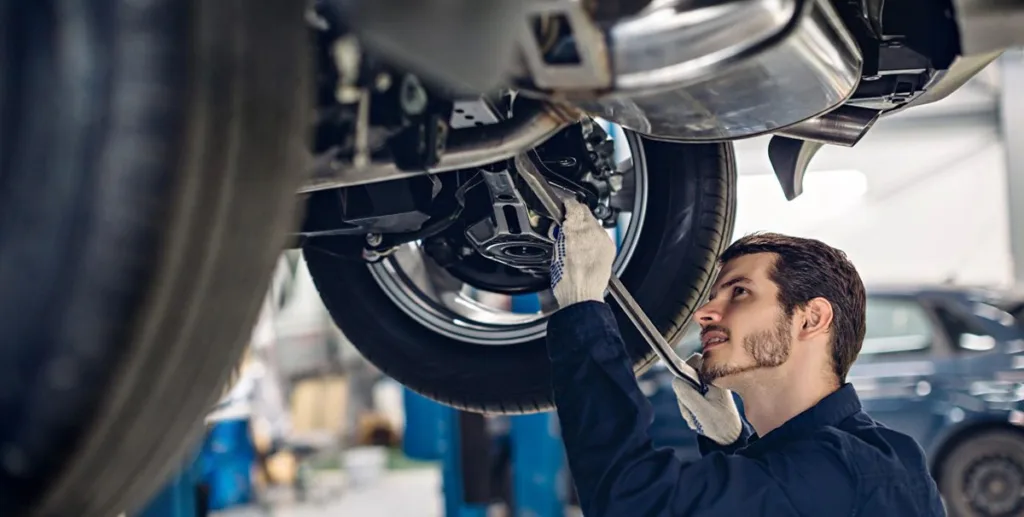All Categories
Featured
Your vehicle's suspension system plays a crucial duty in supplying a smooth and steady adventure, making sure that you preserve control on numerous surfaces. It soaks up roadway shocks, supports the lorry's weight, and maintains tires touching the roadway. Correct maintenance of this complicated system is vital for safety and performance. Comply with these steps to ensure your shock absorber stays in optimum condition.
![]()
Dripping Liquid: Shocks or struts may leakage oil when they're worn. Harmed Springs: A drooping or uneven stance might show a damaged spring. Worn Bushings or Ball Joints: Splits, tears, or uncommon movement during procedure recommend wear. Rust or Rust: In time, metal parts might corrode, bring about damaged elements. Address any concerns quickly by seeking advice from a specialist auto mechanic.
![]()
Feathered Tread: Indicates bad positioning. Bald Edges: Recommends used shocks or shows off triggering excessive bouncing. Revolve your tires frequently and keep the proper tire pressure to lower stress on the shock absorber. 3. Replace Shocks and Shows Off When Essential. Shocks and struts are vital to your suspension's performance. Indicators they need changing include:
A bouncy or harsh trip. Nose-diving when braking. Excessive body roll when turning. Changing these components at the recommended periods (every 50,000 to 100,000 miles, relying on driving conditions) can restore ride top quality and handling.
Prevent driving over splits, aesthetics, and speed bumps at high speeds. Take edges carefully to avoid too much side forces. Decrease on harsh roadways to decrease damage. 6. Schedule Routine Alignments. Wheel positioning makes sure that your tires and suspension job harmoniously. Misaligned wheels can create steering issues, uneven tire wear, and additional anxiety on suspension parts. Schedule an alignment inspect every year or after hitting a significant crater.
![]()
Conclusion. A properly maintained suspension system improves driving convenience, boosts safety, and expands the life of your vehicle. By remaining proactive with evaluations, resolving concerns promptly, and driving properly, you can maintain this vital system for several years ahead. Invest in appropriate suspension maintenance today, and delight in a much safer, smoother adventure on every trip.

- Check Suspension Elements Consistently. Routine aesthetic examinations can help determine prospective problems early. Search for the following signs:
Dripping Liquid: Shocks or struts may leakage oil when they're worn. Harmed Springs: A drooping or uneven stance might show a damaged spring. Worn Bushings or Ball Joints: Splits, tears, or uncommon movement during procedure recommend wear. Rust or Rust: In time, metal parts might corrode, bring about damaged elements. Address any concerns quickly by seeking advice from a specialist auto mechanic.

- Screen Tire Wear. Unequal tire wear frequently indicates suspension issues. :
Feathered Tread: Indicates bad positioning. Bald Edges: Recommends used shocks or shows off triggering excessive bouncing. Revolve your tires frequently and keep the proper tire pressure to lower stress on the shock absorber. 3. Replace Shocks and Shows Off When Essential. Shocks and struts are vital to your suspension's performance. Indicators they need changing include:
A bouncy or harsh trip. Nose-diving when braking. Excessive body roll when turning. Changing these components at the recommended periods (every 50,000 to 100,000 miles, relying on driving conditions) can restore ride top quality and handling.
- Stay Clear Of Overloading Your Car. Overloading your automobile puts unneeded tension on the shock absorber. Surpassing your car's weight capacity can lead to early wear and lowered efficiency. Always check your owner's handbook for the optimum load limitation and pack as necessary.
- Bear in mind Your Driving Routines. Driving behaviors dramatically affect the health and wellness of your suspension system. To reduce strain:
Prevent driving over splits, aesthetics, and speed bumps at high speeds. Take edges carefully to avoid too much side forces. Decrease on harsh roadways to decrease damage. 6. Schedule Routine Alignments. Wheel positioning makes sure that your tires and suspension job harmoniously. Misaligned wheels can create steering issues, uneven tire wear, and additional anxiety on suspension parts. Schedule an alignment inspect every year or after hitting a significant crater.
- Lube Moving Components. Some suspension components, like round joints and bushings, take advantage of occasional lubrication. This lowers rubbing, decreases wear, and expands their lifespan. Examine your owner's manual or consult your auto mechanic for particular lubrication referrals.
- Prioritize Routine Expert Assessments. While do it yourself upkeep aids, specialist inspections are essential for identifying surprise problems. Specialists can assess hard-to-spot issues like worn control arms or concealed structural damages. Normal evaluations also offer assurance, ensuring all components are operating correctly.

Conclusion. A properly maintained suspension system improves driving convenience, boosts safety, and expands the life of your vehicle. By remaining proactive with evaluations, resolving concerns promptly, and driving properly, you can maintain this vital system for several years ahead. Invest in appropriate suspension maintenance today, and delight in a much safer, smoother adventure on every trip.
Latest Posts
Discover the Premier Auto Repair Discounts in Montclare, Chicago
Published May 26, 25
1 min read
Smooth Light Weight Aluminum Rain Gutters: The Smart Selection for Your Home
Published May 23, 25
1 min read
Identifying When Your Car Needs Skilled Auto Repair at Montclare Auto Repair
Published May 23, 25
1 min read
More
Latest Posts
Discover the Premier Auto Repair Discounts in Montclare, Chicago
Published May 26, 25
1 min read
Smooth Light Weight Aluminum Rain Gutters: The Smart Selection for Your Home
Published May 23, 25
1 min read
Identifying When Your Car Needs Skilled Auto Repair at Montclare Auto Repair
Published May 23, 25
1 min read